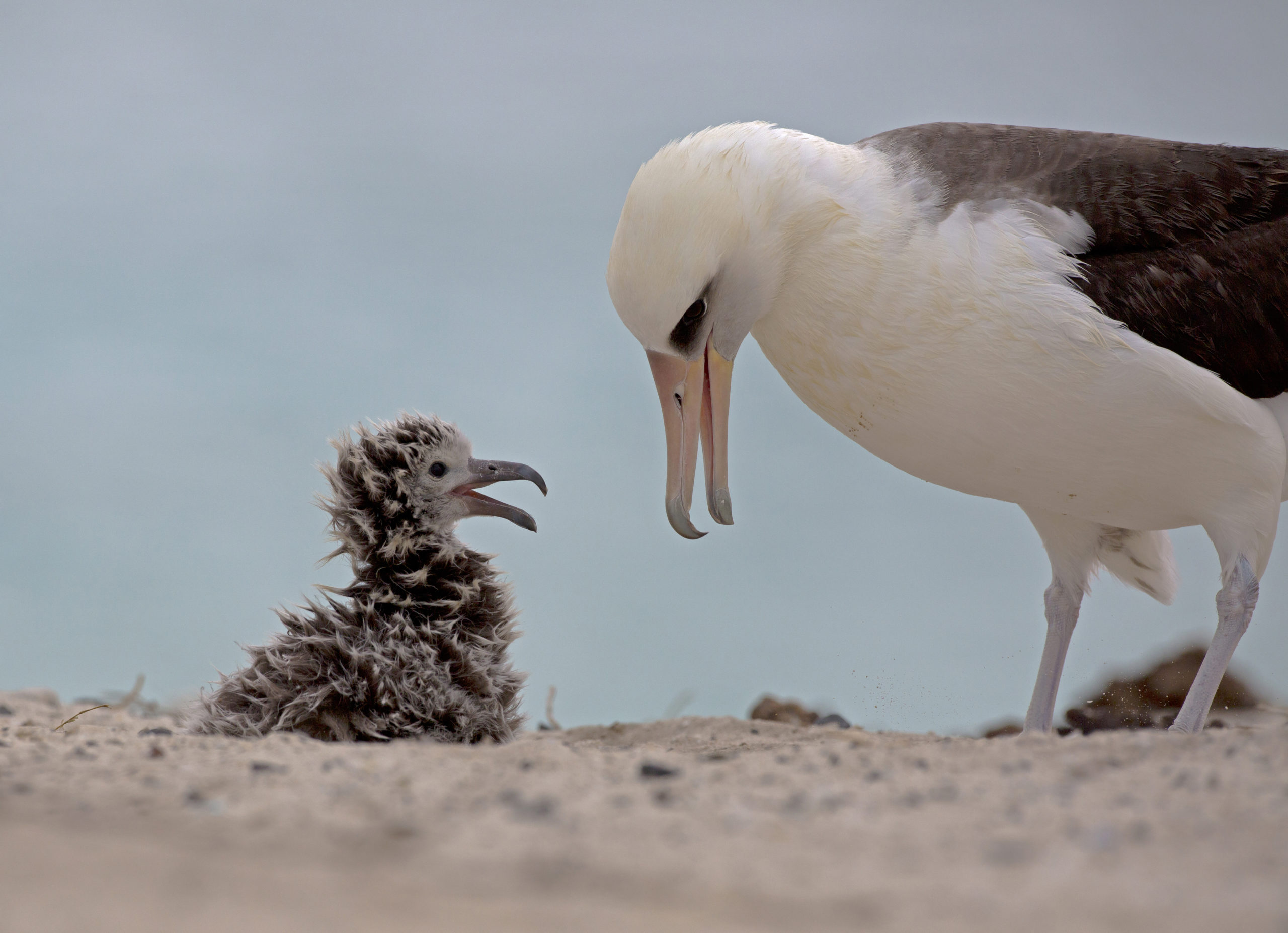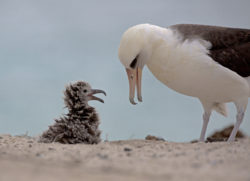
Bird Watching in National Marine Sanctuaries
Bird watching is a popular activity across the National Marine Sanctuary System, and it’s no mystery why. More than 150 bird species live, breed, and migrate near the ocean waters surrounding North America, and at least 187 species do the same near the Great Lakes. Additionally, more than 350 species of birds migrate through North America annually. That’s a lot of birds!
America’s national marine sanctuaries support healthy bird populations by providing foraging and nesting grounds, whether along their migratory routes or in their home ranges. By protecting these important habitats and the food webs they support, bird populations and ecosystems alike can thrive. Birds are especially important to ocean ecosystems whether they are seabirds or not. Birds that feed in estuaries, rivers, wetlands, and coastal waters keep populations of fish, crustaceans, mollusks, and invertebrates in balance by feeding on and removing sick or otherwise vulnerable animals from the food web, and songbirds that migrate through or along coastal areas promote plant growth by aiding in seed dispersal through their poop (a gross but true fact of life!).
What’s also great about birds is that they are sentinel species, meaning their health is an indicator of ecosystem health and can potentially alert us to threats in the environment or to human health. This is because birds are sensitive to changes in the environment. They rely on healthy habitats and food webs for nesting, resting, foraging, and practicing social behaviors, and changes in these behaviors can hint at environmental shifts that scientists can further investigate. Factors that deter birds are poor water quality, disease outbreaks, reduced availability in food, or human development to name a few.
For all our birdwatchers, whether novice or expert, here are just a few of the amazing bird species you can see in America’s national marine sanctuaries:
Channel Islands
Ashy Storm Petrel
Black oystercatcher
Western Gull
Cordell Bank
Horned Puffin
South Polar Skua
Ancient Murrelet
Flower Garden Banks
Brown booby
Indigo Bunting
Brown-headed Cowbird
Scarlet Tanager
Greater Farallones
Brandt’s Comorant
Pigeon Guillemot
Marbled Murrelet
Rhinoceros Auklet
Monterey Bay
Sandpipers
Egrets
Black-footed Albatross
Ruddy Turnstone
Olympic Coast
Fork-tailed Storm-Petrel
Common Murres
Sooty Shearwaters
Tufted Puffins
Stellwagen Bank
Roseate Tern
Wilson’s Storm Petrel
Soory Shearwater
Red Phalarope
Double Crested Cormorant
Sites throughout the National Marine Sanctuary System host citizen science events throughout the year, giving birdwatchers the opportunity to pursue their hobby in a new way while giving back to the birds they love through science. Data collected by volunteers is used by sanctuary managers and scientists to help protect seabirds and other wildlife through research and informed management decisions. NOTE: Many of these annual events are currently postponed due to the COVID-19 pandemic. Check each sanctuary’s website for up-to-date information.
Christmas Bird Count (Stellwagen Bank): The Stellwagen Bank bird count has been scheduled since 1988. Each year, Stellwagen Bank National Marine Sanctuary teams up with the Audubon Society for the Stellwagen Bank Christmas Bird Count. Christmas Bird Count volunteers join sanctuary staff onboard the R/V Auk to survey a 15-mile-diameter area of the sanctuary. The data they collect can help assess the health of bird populations and of the sanctuary ecosystem.
COASST (Olympic Coast): Volunteers routinely survey beaches within the Sanctuary on the program called Coastal Observation and Seabird Survey Team (COASST) to collect bird mortality data in order to better understand population dynamics.
Beach Watch (Greater Farallones): Beach Watch is a long-term shoreline monitoring project which was founded in 1993 by Greater Farallones National Marine Sanctuary. Volunteers collect data on live and dead species of birds and marine mammals and human activities. They also report violations, detect oil pollution, and collect oil samples.
If you’re not yet a bird watcher – try it out! It’s a low-cost activity and perfect for social distancing. Grab binoculars and a chair and plant yourself outdoors. Learn more from the National Park Service’s birdwatching guide for beginners

Laysan Albatross Mother And Chick in Papahānaumokuākea Marine National Monument Photo Credit: Dan Clark/USFWS
